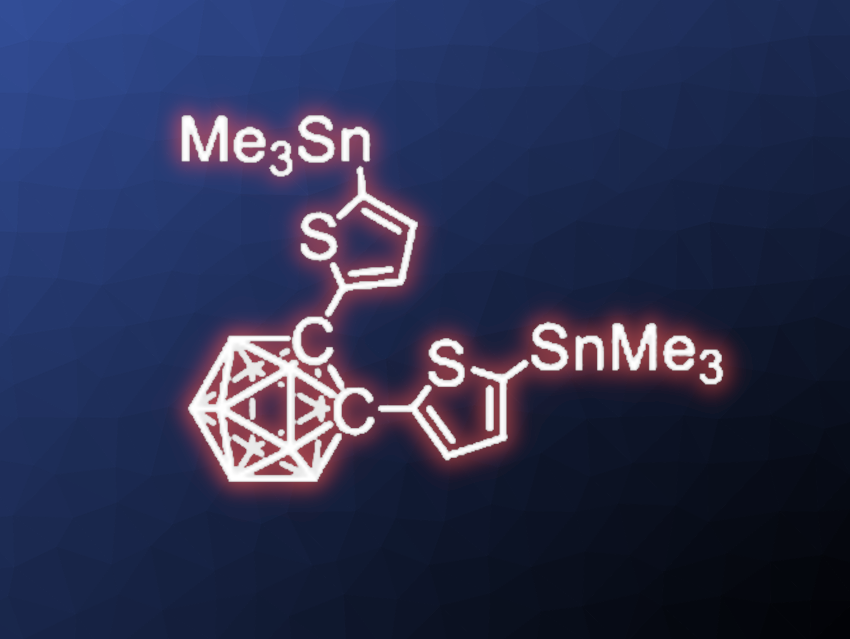Usually, fluorescent organic compounds are more emissive in solution than in the solid state. Some compounds, however, follow the opposite trend, i.e., they demonstrate aggregation-induced emission (AIE). Materials that show AIE can have a strong, red-shifted emission in the solid state and, thus, could theoretically be promising candidates for near-infrared (NIR) applications. However, AIE materials with useful emission in the NIR region above 700 nm are rare.
Martin Heeney, Imperial College London, UK, and King Abdullah University of Science and Technology, Thuwal, Saudi Arabia, and colleagues have developed conjugated polymers with carborane units (clusters composed of boron, carbon, and hydrogen atoms) in the backbone. The polymers can serve as NIR emitters with an aggregation-induced emission in the near-infrared region. The team used indacenodithiophene (IDT) as an aromatic building block for the polymer, which was dibrominated and then coupled with different di(5-(trimethylstannyl)thiophen-2-yl) carboranes in Stille polymerizations.
Of the resulting polymers, the one using an ortho-carborane derivative (pictured) achieved a photoluminescence quantum yield of 13.4 % with a photoluminescence maximum at 734 nm. Interestingly, the paraand meta carboranes building blocks gave polymers that emit in the visible region and show aggregation-caused quenching (ACQ). According to the researchers, the work shows the potential of carboranyl materials for light-emitting applications, e.g., NIR-emitting organic light-emitting diodes (OLEDs).
- A Conjugated Carboranyl Main Chain Polymer with Aggregation-Induced Emission in the Near-Infrared,
Filip Aniés, Iain Hamilton, Catherine S. P. De Castro, Francesco Furlan, Adam V. Marsh, Weidong Xu, Valentina Pirela, Adil Patel, Michele Pompilio, Franco Cacialli, Jaime Martín, James R. Durrant, Frédéric Laquai, Nicola Gasparini, Donal D. C. Bradley, Martin Heeney,
J. Am. Chem. Soc. 2024.
https://doi.org/10.1021/jacs.4c03521




